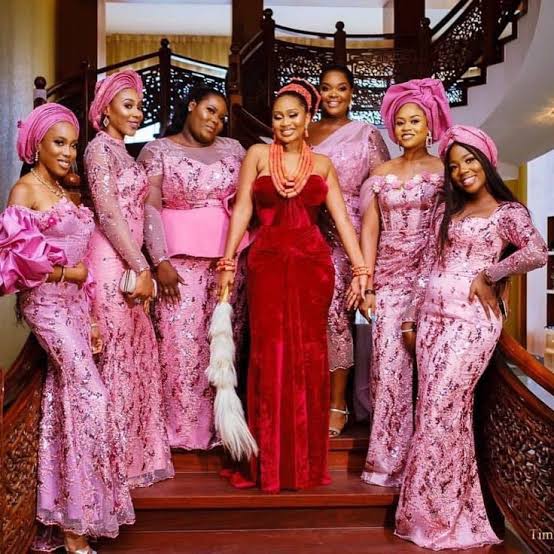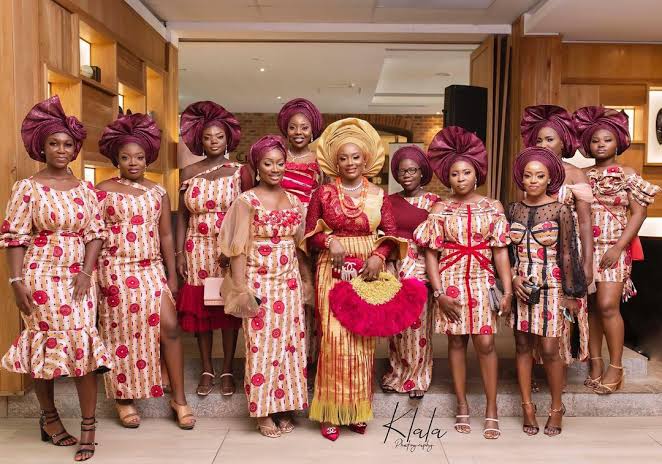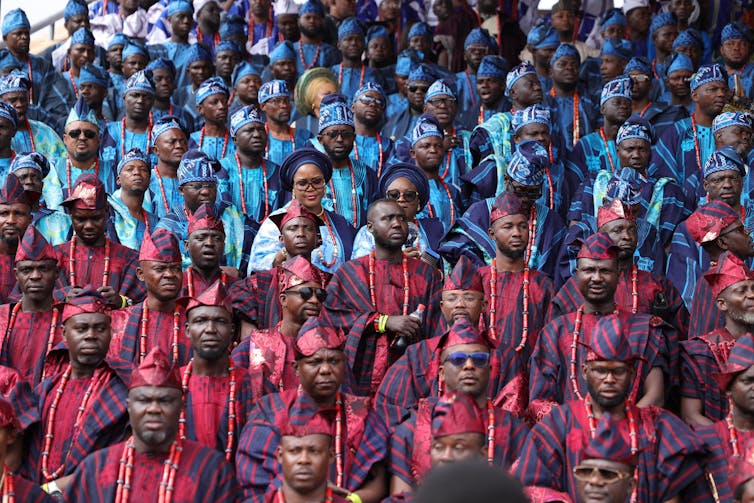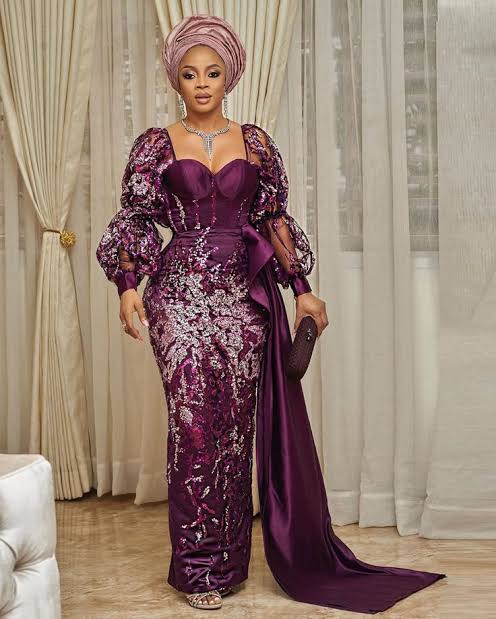Outside, I could hear the choir singing so melodiously that the birdsong stopped, as if the birds were listening and learning. As I walked down the aisle to the fifth and last chair in the seventh row, located between the first and third columns, I could still tell who belonged to the bride’s and groom’s families, even though I wasn’t a relative – just a friend invited by one of them. How? That’s the power of Aso-Ebi.
Aso-Ebi, for those who don’t know, is an ancient Yoruba custom symbolizing kinship. Also, it was believed that wearing the same attire strengthened bonds and unions. However, nowadays, although still worn by the Yoruba people, it’s not restricted to kinsmen only. Any group, political party, or organization can choose a fabric as their Aso-Ebi and wear it to parties, funerals, political rallies, and even birthdays. Moreover, beyond the undeniable beauty it adds to occasions, Aso-Ebi makes the people wearing it stand out prominently. Some believe, however, that Aso-Ebi has become a competition among the wealthy, with people trying to outdo each other.

Types of Aso-Ebi Fabrics
ANKARA
I personally believe Ankara is the mother of all African fabrics. It embodies a vibrant array of African prints in colorful stripes and patterns, offering a range of stunning color combinations. OMG, I almost forgot! It is also very versatile, as it can be used to make caps, hats, earrings, bangles, and even shoes.

ASO OKE
Oh, the Yoruba pride! This prestigious hand-woven fabric originates from the Yorubas. Furthermore, Its prestige, apart from its endowed beauty, comes from the knowledge of how painful and time-consuming its production could be. Its popularity in the clothing market marks the huge significance and relevance of Yoruba culture in today’s world. Here are the pictures of people slaying in Aso-Ebi made from Aso Oke.

LACE
Ok, here comes the dearest of them all. The last child of the goddess of fabrics. The most beautiful and delicate. Originally, silk and linen were once used to make it, but now synthetic fibers and cotton thread have taken over. Here is a picture of a woman slaying in her Lace as Aso-Ebi.

Lastly, more than the aforementioned popular fabrics currently used for asoebi, kaftan and organza offer exciting possibilities.
If you enjoyed this article, do well to click here to read more exciting articles on Aso-Ebi and fashion in general.



Leave a Reply